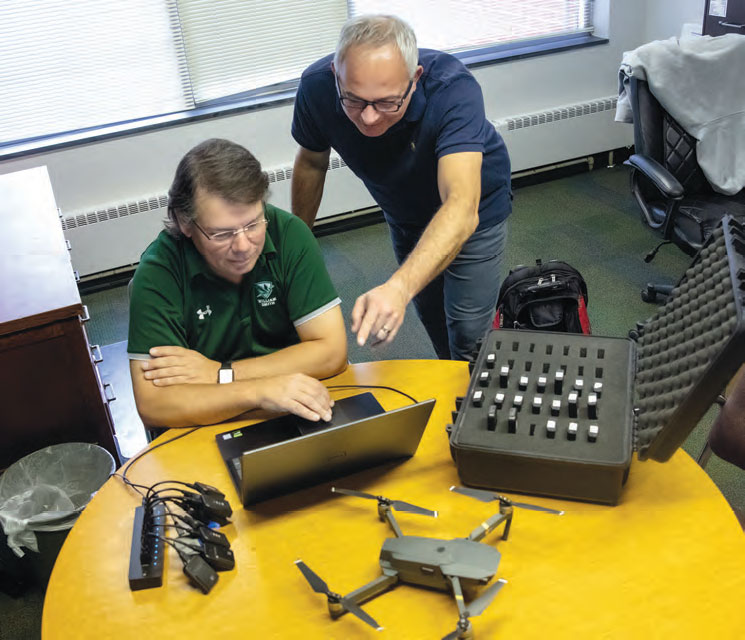Pulteney Street SurveySpring 2020

Tracking Champions
by Mackenzie Larsen '12
Whether tracking the exit velocity of a home run, the speed of a slapshot or the apex and velocity of a golf shot, analytics are everywhere in sports. Thanks to a donation from HWS Trustee Calvin "Chip" Carver Jr. '81, the 17-time Liberty League Champion William Smith soccer team has jumped on board the analytics train.
In 2018, Carver and the Heron coaching staff began using Titan Realtime GPS, a device worn during practices and games that collects intricate data on an athlete's performance and physical wellbeing. The unit is inserted into the pocket of a vest players wear under their jerseys. "At the basic level, the tracking gives the coaching staff a sense of each player's fitness levels," Carver says. "We can get a sense of who will still have gas in the tank at the end of a tough game and who will not. The data along with observation can give you an idea on how each athlete is different."
During a game or practice, the Titan device tracks the level of physical effort, including how many sprints each athlete completes and how fast and how far they run. While the team regularly has players run 15 mph, the fastest speed Carver has seen a Heron hit was 19 mph. He has heard professional athletes who use the device brag about hitting 21 mph.
In addition, Titan creates a heat map of where players are on the field, giving coaches additional information that can't be seen on film. Heat maps allow coaches to track how many runs players make and in what direction, which can be used to instruct the team on where the coaches expected players to be as opposed to where they've actually been. Carver notes that coaches also use heat maps to see if a player makes runs from goal line to goal line instead of sideline to sideline.
Athletes use Titan to track and assess their progress. Before games and practices, each player fills out a quick survey about how they're feeling; questions cover the quantity and quality of sleep, soreness and overall fatigue. Coaches take this information into account when planning training sessions and share it with the athletic training staff in case of an injury. After workouts and games, a second survey asks about the level of effort expended by each athlete. This information provides coaches insight into perceived effort, which is then compared with data of actual effort from the GPS tracker.
For the 2019 season, Heron soccer coaches used Titan to focus on how individual athletes got ready for games. "Practices are more important to our staff than games," Carver says. "From the data, we saw that the effects of a large effort show up 48 hours later, so we learned that if the team went hard Monday and Tuesday we have to think about what Wednesday's practice will look like with weekend games."
The data allows coaches to track the team's workload. "I can say in this particular practice the team put in this effort, so we need to watch what we do tomorrow," says Carver. "You can get to this information by just watching the athletes, but the data gives you that additional amount of insurance to confirm what your eyes are seeing." Titan then allows coaches to tweak that workload. "We had a good dozen players in their best physical shape at the end of the season."
Head Coach Aliceann Wilber P'13 sees many benefits of the system. "The trackers provide us with specific data to shape the work load intensity and volume," she says. "They especially help us to temper our training for identified individuals. Where we used to rely on input from student-athletes and our own observations, the trackers provide information at a higher level."
Carver has also implemented a drone during training. While it can't be used during games, at practice the drone takes between 15 and 30 video clips, which is especially helpful when working on spacing drills and corner kicks.
Going forward, Carver sees analytics playing an even more expanded role in training and games with the ultimate goal of using data to create peak performance at the most important time of the year, when the Herons head into yet another championship postseason.
